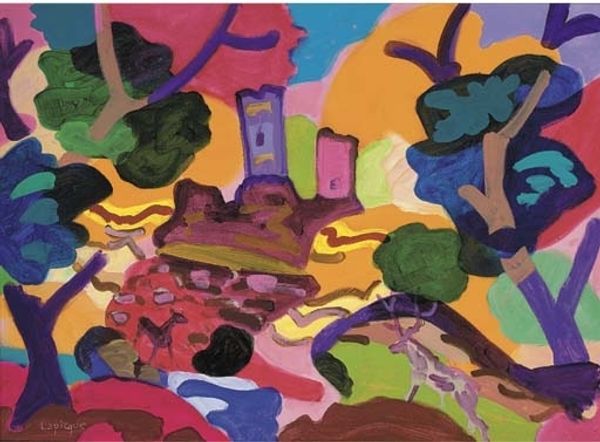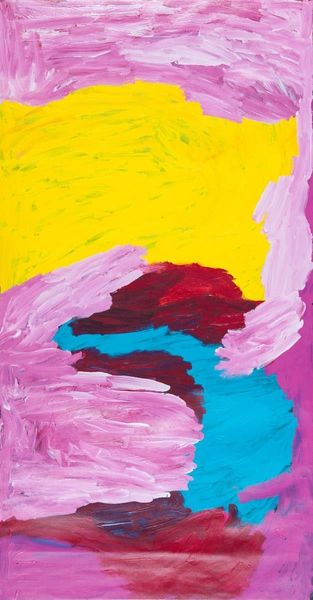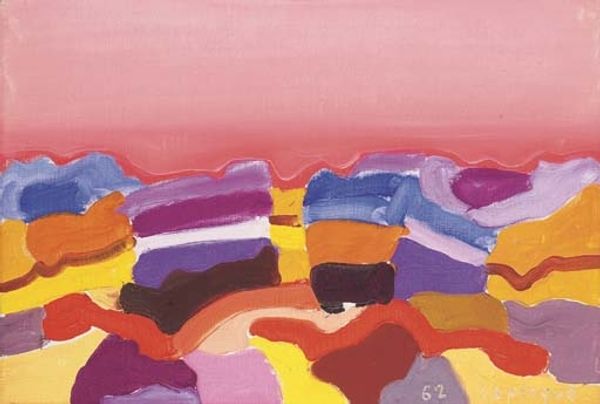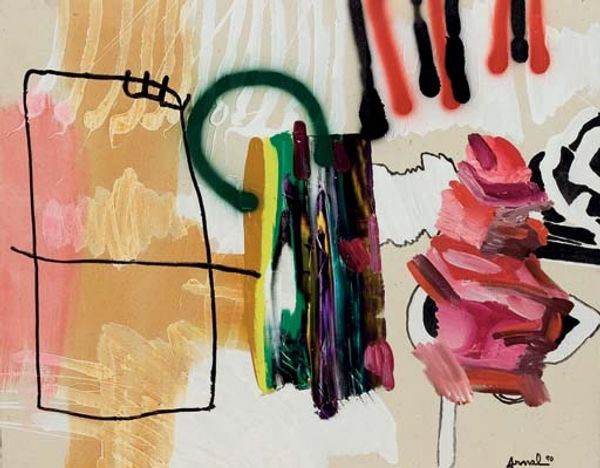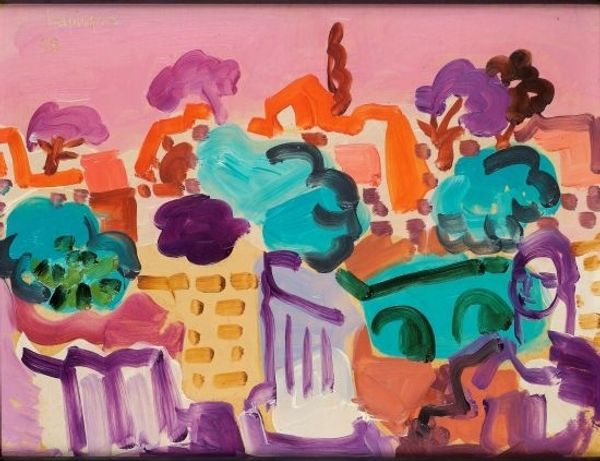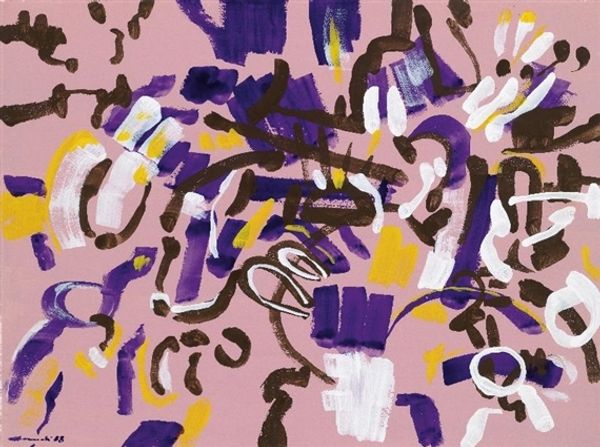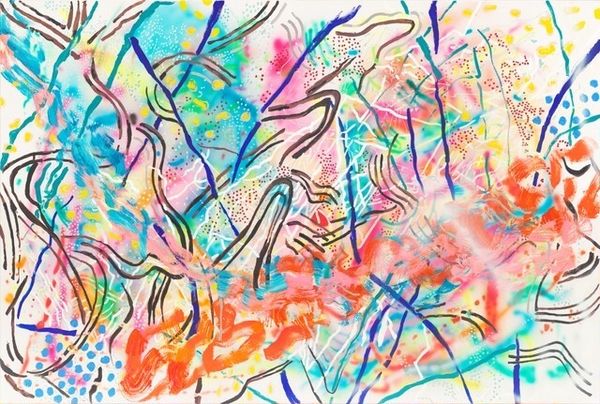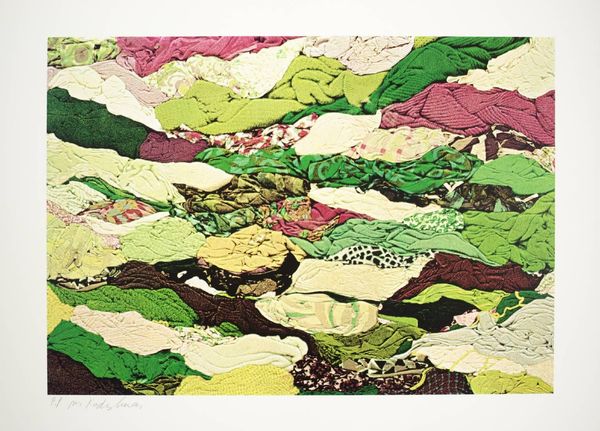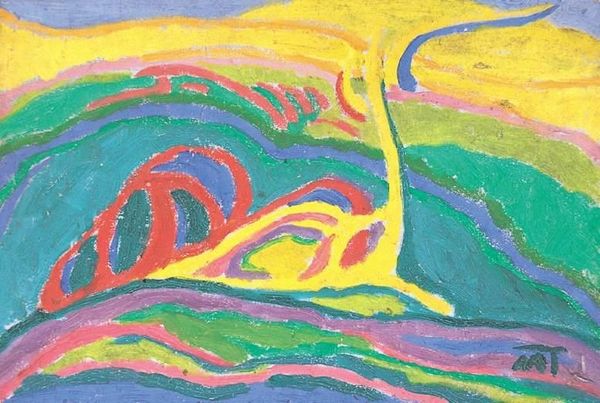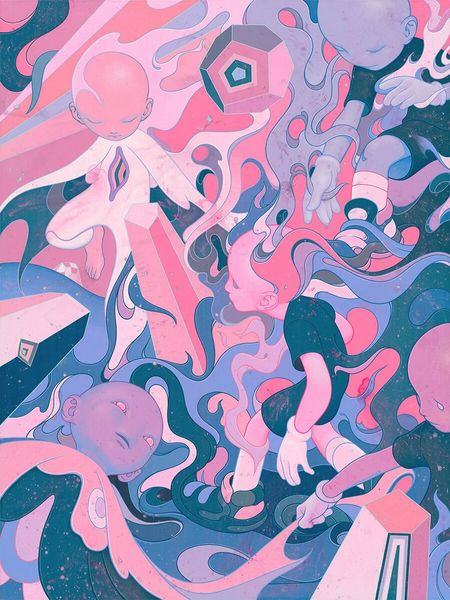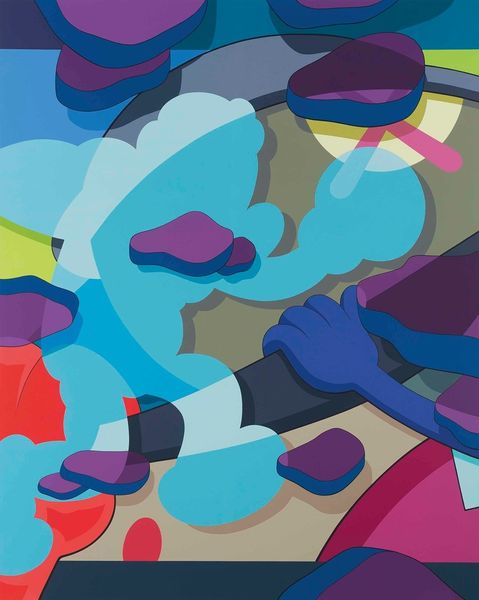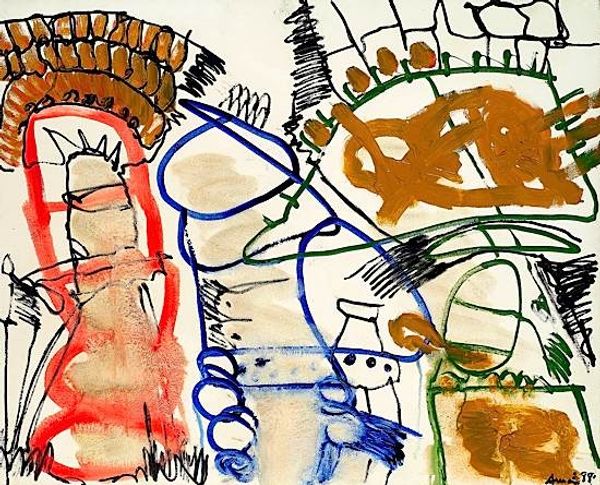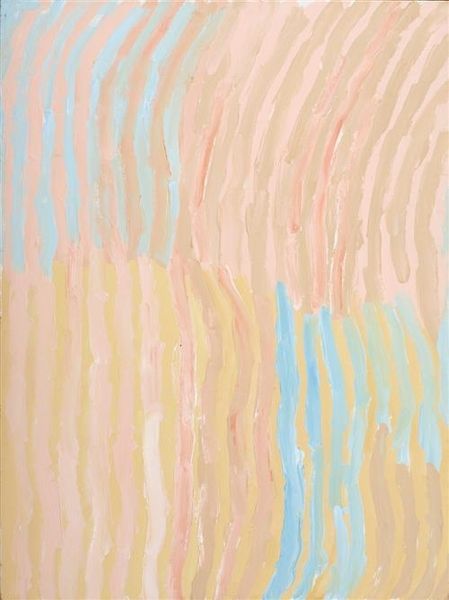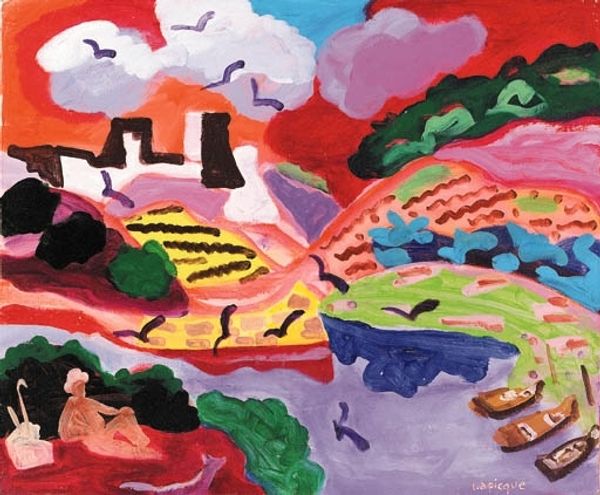
Copyright: Charles Lapicque,Fair Use
Curator: Here we have Charles Lapicque’s "Paysage en Castille," or "Landscape in Castile," painted in 1973 using acrylic paint and ink. What's your first impression of this vibrant landscape? Editor: Well, it leaps off the canvas with this explosion of color! It feels like Fauvism channeled through a slightly more modern, almost pop art lens. The landscape itself feels less like a physical place and more like an emotional terrain, charged with energy. Curator: That's astute. Lapicque was working at a time when landscape painting was evolving and, in some ways, rebelling against traditional representation. He was trained as a scientist before dedicating his life to painting, which adds a fascinating dimension. His work can be viewed as an expressionist response to modernism, mirroring his unique path, and echoing his fascination with abstracting forms. Editor: I’m particularly drawn to how he uses color. The mountains are a riot of pinks, reds, and purples. They aren't realistic, of course, but they convey this sense of sun-baked earth and grandeur, yet he balances the composition perfectly with a subdued foreground. Curator: Absolutely. This deviation from naturalistic colors is a key element in Expressionist landscapes. It represents a shift towards expressing inner feelings, or subjective emotional experiences, through nature. One thing that's really central in Lapicque's artistic project, and to keep in mind when looking at the painting, is the development of public institutions for contemporary art. His evolution happened parallel to that process, therefore, the artwork becomes part of a public debate. Editor: It certainly feels contemporary, despite being over 50 years old. I see recurring serpentine lines that remind me of arteries, perhaps subtly suggestive of the vitality of the land, and almost certainly suggestive of his engagement with symbolic forms. Does Castile hold any particular symbolism for Lapicque? Curator: Castile, in central Spain, is known for its arid plains and historically, its austere spirit. For Lapicque, who often worked in series exploring different regions, it seems to have provided a setting to push the boundaries of landscape convention and experiment freely. In the post-war art world, embracing abstraction allowed artists a means to reinvent and revitalize traditions. Editor: I see what you mean. Looking at the landscape with all these aspects in mind does enrich the experience. It’s no longer just a pretty picture. Curator: Precisely. Lapicque was trying to speak to, and from, the moment, challenging what it meant to represent landscape in the 20th century. Editor: So, much more than just surface appeal; it's an icon that conveys so many layers of meaning when we stop to unpack it.
Comments
No comments
Be the first to comment and join the conversation on the ultimate creative platform.
